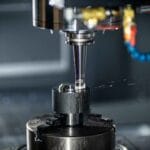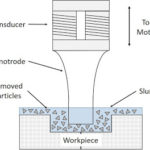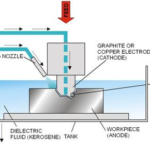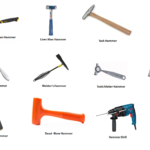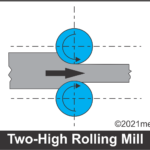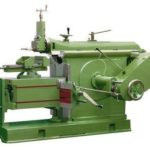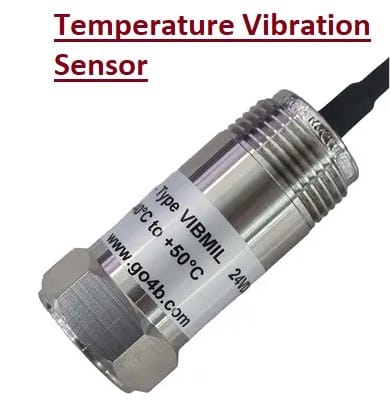
Different manufacturing processes performed in high-temperature conditions, such as machines in paper plants, metal processing, and energy generation, need a temperature vibration sensor for tool monitoring and maintenance.
High-temperature processes are important for conditioning monitoring to get high performance that, managing fire risks, and following safety measures.In this post, we will cover details for the temperature vibration sensor and its importance for the industry.
Introduction to Temperature Vibration Sensor
Structure
- The crystal resonator is configured as a vibration sensor. When the crystal resonator faces vibrations, the oscillation frequency of the crystal resonator varies.
- Faced vibration is transformed into a tensile or compressive force on the crystal resonator with the crystal cantilever and sensitivity setting weight.
Operating Principle
- Oscillation frequency varies based on vibration, which is transformed into physical quantities like displacement, acceleration, velocity, and output, which are shown as digital numbers.
Vibration sensors vs accelerometers
- The vibration sensor title is given based on the detection process, and accelerometers are provided due to the physical quantity measured.
- Vibration sensors use a displacement sensor to detect the magnitude of displacement, acceleration, velocity, and vibration frequency.
- Accelerometers have features to measure periodic acceleration operating on the body and constant acceleration, like gravitational acceleration.
Benefits of Vibration Sensors
- Vibrations has features to minimize downtime and maintenance costs by detecting the machine’s condition over time.
- These features provide predictive maintenance, so we can reduce the risk of damage to machines or products.
- Through a vibration sensor with an IO-Link output, it is possible to monitor the machine’s condition remotely, giving us a round-the-clock view of any faults.
Types of vibration sensors
Analog Vibration Sensors
- and their components are used for object vibration detection and transformed into an analog signal.
- The main feature of the analog vibration sensor that outputs the signal is continuous voltage factor. that has a direct relation with vibration magnitude
- • The analog vibration sensor comes with low cost, high-speed response, and small size.
- But it has chances for being affected by noise and temperature changes.
Digital Vibration Sensors
- Digital vibration sensors detect objects and transform magnitude into a digital signal.
- The main feature of the digital vibration sensor is an output signal encoded, denoted with a binary series of 0 or 1. That binary value is directly proportional to the magnitude of the vibration.
- Digital vibration sensors come with features like high immunity to noise and the ability to minimize temperature drift.
- It is high cost as compared to an analog vibration sensor and good for high-speed sensor response or wide frequency bandwidth measurements.
Vibration Sensors in a Pump Application
are employed for the detection of pump abnormalities and provide good maintenance features and also fault prevention.
Its main uses are as follows.
Abnormal Vibrations
- It measures the vibrations of pump bearings and casing to detect abnormal vibrations.
- It checks pump-damaging indications like cavitation, bearing wear, and bearing damage.
- Finding errors at the start can detect any serious error with the provision of safety measures.
Pump Operation
- It monitors pump function conditions through detection of vibration conditions, with effective operation.
- Through controlling high vibrations, we can minimize energy losses, which makes the process energy efficient.
- It increases the pump’s working life through optimizations of the pump’s operation.
Fault Diagnosis
- the detection of abnormal vibration design, we can reason of pump damage.
- Such as bearing wear, damage to the bearing, and impeller damage can be detected.
- According to the detection of error results, accurate maintenance parameters were followed.
Predictive Maintenance
- Through getting and properly analyzing pump vibration details, we can predict pump deterioration, which helps with maintenance before any damage occurs.
- Predictive maintenance controls any damage and provides accurate maintenance that reduces cost and high productivity.
Temperature Vibration Sensor Price Range
| Unit($) | Single axis(10-1600Hz) | Three axis(10-1600Hz) | Single axis(10-5000Hz) | Three axis(10-5000Hz) |
| M8 thread | 146.8 | 157.3 | 209.7 | 230.6 |
| M5 thread | 146.8 | 157.3 | 209.6 | 230.6 |
| Magnetic | 151 | 161.5 | 213.9 | 234.8 |
Features of Vibration Sensors
Main features of vibration sensors are as
High Precision
- It provides high accuracy and stability since some come with quartz micromachining technology.
- It easily detects low vibrations and is good for accurate calculation.
Compact and Lightweight
- A quartz resonator helps to make a low-weight and compact design.
- it can connected in low space area that provide different applications uses
Low Power Use
- Its low power usage makes it good for battery-powered operation.
- It is good to use for long operating modules and provides high energy efficiency.
Wide Detection Range
- It has features for detecting larger frequency bands, like low to high frequencies.
- It has features for use in different vibration measurements.
How to Mount a Vibration Sensor
- If the connection area allows, use the threaded installation process. A standard thread on the metallic housing gives a high-speed connection with the mounting site.
- Industrial vibration sensor thread comes with features like M8*1.25*10 and M5*7 external thread.
- If the installation area does not come with a thread and is not drilled, use magnetic installation; you just need to connect the industrial vibration sensor to the installation area.
- any type of installation method used, we can accurately and given time measure vibration variations resulting from loose components, damaged gears, or band rolling bearings.
- It sends a signal to users for fault detection that controls the machine for further working in faulty conditions.
Conclusion
The temperature vibration sensor has become an essential tool in modern industries where high-temperature processes and heavy machinery are involved. From paper plants to metal processing and energy generation, these sensors ensure accurate condition monitoring, predictive maintenance, and fault prevention. By detecting even the slightest vibration variations, they help reduce downtime, extend equipment life, and improve energy efficiency.
Whether you choose analog or digital vibration sensors, their benefits in precision, durability, and safety far outweigh the costs. When installed correctly—via threaded or magnetic mounting—they provide real-time insights, enabling operators to take preventive action before minor issues turn into costly breakdowns.
In short, investing in a temperature vibration sensor is not just about monitoring—it’s about securing reliability, boosting productivity, and maintaining safety in demanding industrial environments.

